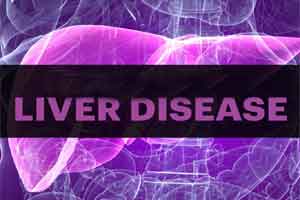- Home
- Editorial
- News
- Practice Guidelines
- Anesthesiology Guidelines
- Cancer Guidelines
- Cardiac Sciences Guidelines
- Critical Care Guidelines
- Dentistry Guidelines
- Dermatology Guidelines
- Diabetes and Endo Guidelines
- Diagnostics Guidelines
- ENT Guidelines
- Featured Practice Guidelines
- Gastroenterology Guidelines
- Geriatrics Guidelines
- Medicine Guidelines
- Nephrology Guidelines
- Neurosciences Guidelines
- Obs and Gynae Guidelines
- Ophthalmology Guidelines
- Orthopaedics Guidelines
- Paediatrics Guidelines
- Psychiatry Guidelines
- Pulmonology Guidelines
- Radiology Guidelines
- Surgery Guidelines
- Urology Guidelines
New tool can pinpoint life-threatening liver disease

New York : US researchers, led by an Indian-origin scientist, have developed a novel 3-D imaging tool that can provide highly accurate method to detect non-alcoholic fatty liver disease (NAFLD) that often begins without symptoms but can progress to cancer.
The researchers at the University of California, San Diego, conducted a prospective study of 100 patients (56 percent women) with biopsy proven NAFLD to assess the efficacy of two-dimensional magnetic resonance elastography (MRE) and a novel 3D version.
They found that both MRE technologies were highly accurate for diagnosing advanced fibrosis, with 3D perhaps providing additional capabilities in some patients.
"3D MRE is probably the most accurate non-invasive method to detect advanced fibrosis," said Rohit Loomba, the study's first author and director of the NAFLD Research Centre at UC San Diego School of Medicine.
MRE is a specialized version of magnetic resonance imaging (MRI) that propagates mechanical shear waves in liver tissue. An algorithm creates images that quantitatively measure tissue stiffness an indicator of fibrosis.
The 2D version of MRE is already commercially available and easily implemented on basic MRI systems in clinics. Three-dimensional MRE is more technically demanding and not yet widely available.
The findings of the study, published recently in the American Journal of Gastroenterology, are encouraging because diagnosing NAFLD can be challenging.
Current non-invasive techniques, such as molecular biomarkers in blood, are not sufficiently accurate for routine clinical use. Ultrasound-based methods have high failure rates, particularly in obese patients.
"These findings suggest that MRE could be used to enroll patients with advanced fibrosis into screening programs for cirrhosis as well as enrollment into clinical trials aimed at reversing fibrosis in the setting of advanced fibrosis," Loomba said.

Disclaimer: This site is primarily intended for healthcare professionals. Any content/information on this website does not replace the advice of medical and/or health professionals and should not be construed as medical/diagnostic advice/endorsement or prescription. Use of this site is subject to our terms of use, privacy policy, advertisement policy. © 2020 Minerva Medical Treatment Pvt Ltd